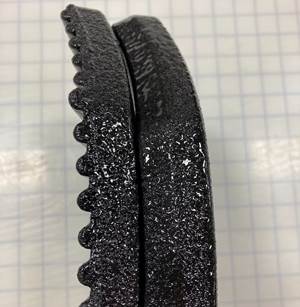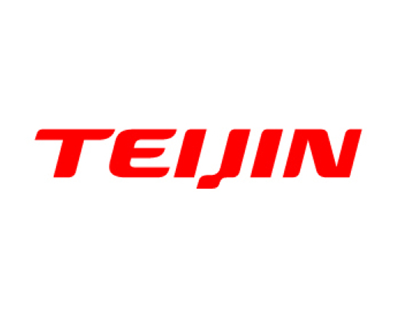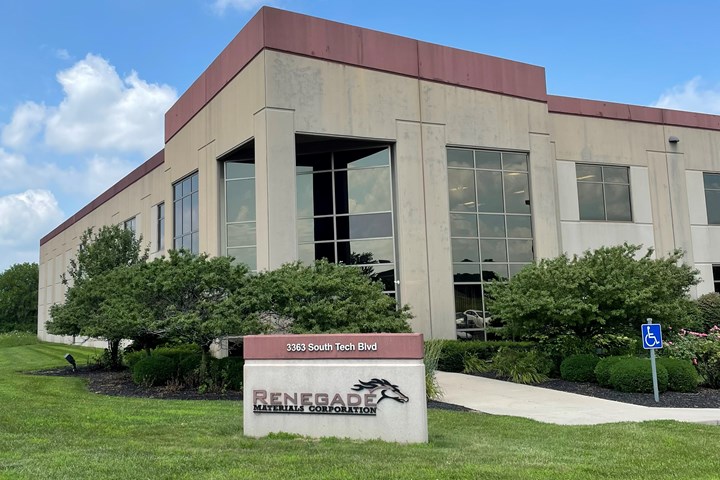
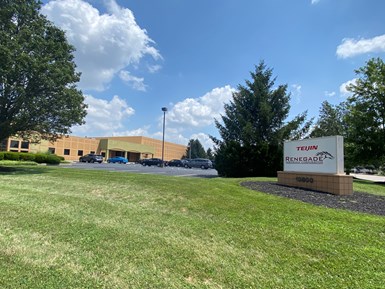
Touring Renegade Materials. Located within walking distance of each other in Miamisburg, Ohio, Renegade’s original facility (pictured above) focuses on production of high-performance polyimide resins and prepregs. The newer facility (lower right), opened in 2019, includes expanded production capacity and new materials. Photo credit, all images: CW
Renegade Materials Corp. (Miamisburg, Ohio, U.S.) was founded in 2007 with a purpose-built, 25,000-square-foot facility that housed a custom-built prepreg machine specifically for manufacturing aerospace-grade prepreg.
Strategically located in Dayton, Ohio, near many companies working in the defense aircraft space, the company originally specialized in high-temperature prepreg for use in defense aerospace applications such as engine components.
Over time, Renegades’ customer base has expanded to include applications in general aviation and commercial aircraft, defense and commercial aircraft radomes, space, satellites and electric vertical takeoff and landing (eVTOL) vehicles and drones. The company’s product portfolio includes a range of fiber options (carbon fiber, glass fiber, quartz, etc.) and other types of thermoset resins such as bismaleimide (BMI), epoxy and cyanate ester. Low-dielectric epoxy and cyanate ester prepeg systems have been commercialized to meet dielectric loss requirements in radome applications. Renegade also produces adhesives to support its prepreg lineup, and resin systems for resin transfer molding (RTM).
In 2019, Renegade Materials was acquired by Teijin Ltd. (Tokyo, Japan). “Teijin invested in Renegade to strengthen its carbon fiber position and to expand its intermediate materials business,” explains Jim Magato, director of sales and technology at Renegade Materials. As a subsidiary of Teijin, the company has expanded use of Teijin fibers, collaborates with the company on new thermoset resin technology and has access to Teijin’s global sales and marketing capabilities.
“The synergy between Teijin and Renegade has been great. It’s expanded our technology portfolio, and given us a greater global presence,” adds Tom Sutter, director of operations at Renegade Materials.
Following the acquisition, Teijin renovated a second, larger facility within walking distance of the original location. The new 40,000-square-foot space, opened in 2019, includes a higher-capacity prepreg line, with the capacity to expand its production processes in future.
Today, Renegade and its team of more than 60 employees operates both facilities, strategically producing its high-performance polyimide products in the original facility, and most of its other products in the new space. Additionally, there is room to expand — in 2020, a nearby third lot was purchased for future expansion.
Touring Renegade Materials: New facility, expanded capabilities
CW recently had the chance to visit both of Renegade Materials’ Miamisburg facilities. The tour began in the newer, larger facility, with a breakdown of the history and background of the company and a walk around the company’s office space.
From there, the main portion of the facility extends into three separate areas: Resin compounding, prepreg manufacturing and quality assurance/testing.
“Basically the process starts where we make and produce the resins that are the core of our product,” explains Magato. “That could be a final product — like for one of our RTM resins, we make the resin and package and sell it. Most of our resin products go to the prepreg line, which is followed by quality assurance and testing.”
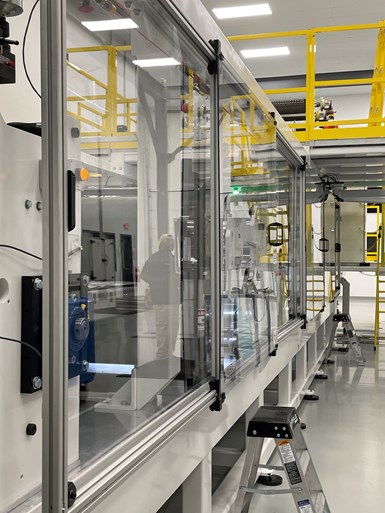
The prepreg line. The key to Renegade Materials’ business is its impressive, custom-built, proprietary prepreg manufacturing line, which operates at speeds of 80 feet per minute to produce rolls of prepreg material in a variety of reinforcement and thermoset resin options.
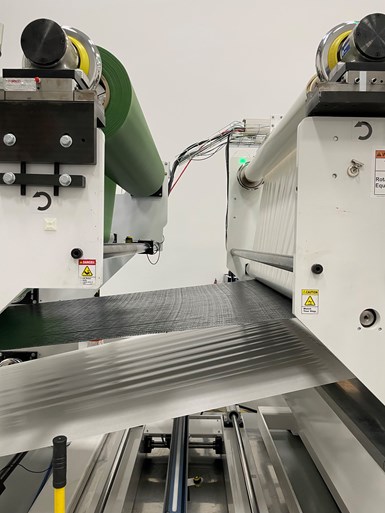
The largest area and piece of equipment in the facility is the prepreg line. Custom-built for Renegade Materials, the line was processing carbon fiber and Q183 rapid-cure epoxy prepreg during CW’s tour.
On one side of the machine, rolls of textile reinforcement — carbon fiber, in this case — are fed into the machine, where it then goes through Renegade’s resin application process. Once impregnated, the fabric is then pulled along a conveyor belt through the rest of the machine, where rollers apply pressure to ensure consistent resin flow throughout the fabric. “Controlling resin flow, keeping it consistent — that’s the key,” Magato explains.
The line can process prepreg material up to 60 inches wide, at a speed of up to 80 feet per minute — in comparison, the original line processes up to 30 feet per minute.
In a proprietary process, product attributes are measured and tested in-line and in real time, Magato notes. “We constantly receive feedback so we can make adjustments to improve product quality.”
Finally, at the end of the line, material is packaged, labeled and then moved into on-site freezers.
The prepreg line and process are material-agnostic, Magato explains, and can include various reinforced prepregs as well as adhesive films.
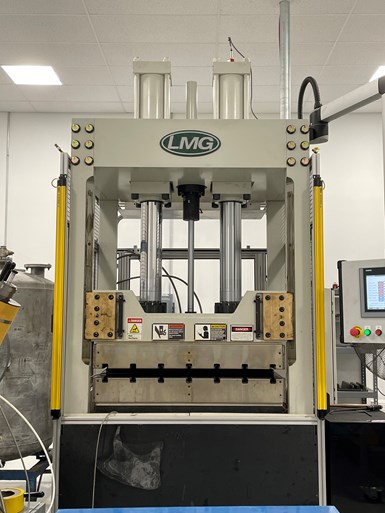
Acquiring process knowledge. The company takes pride in its capabilities for fabricating and testing test panels using its materials, both to test their properties and to help customers better understand and use Renegade’s products. Processing equipment includes a compression press (top) and autoclave (bottom).
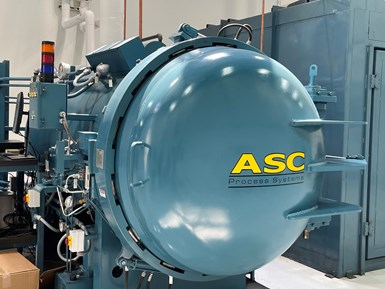
Outside the prepreg production room, the new facility also houses a large warehouse storage space, an area for developing and testing processing technologies, a layup room where batch acceptance test panels are fabricated, and a quality assurance (QA)/analytical testing lab.
Most part fabricators use hand layup and autoclave cure, Magato says, but an increasing number are interested in testing prepreg materials with out-of-autoclave (OOA) processes. For the purposes of testing and expanding process knowledge, Renegade Materials has acquired processing equipment to fabricate flat test panels via vacuum-assisted RTM, compression molding via an LMG (now Trinks, De Pere, Wis., U.S.) press and oven cure, in addition to an ASC Process Systems (Valencia, Calif., U.S.) autoclave.
Nearby, technicians in a layup room prepare test panels that head to the Nadcap-accredited QA and analytical characterization lab. There, chemical testing can be done to assure properties in the resin, using thermal gravimetric analysis (TGA), rheometers, differential scanning calorimetry (DSC), high-performance liquid chromatography (HPLC) and more. “We have a lot of capability to test our materials,” Magato says.
In addition to providing technical support to customers, Renegade’s R&D group uses the lab to test the properties of new materials.
Flagship products and further development
CW’s tour next heads on foot down the street to Renegade’s original facility, which mostly serves to produce the company’s high-performance polyimide-based products.
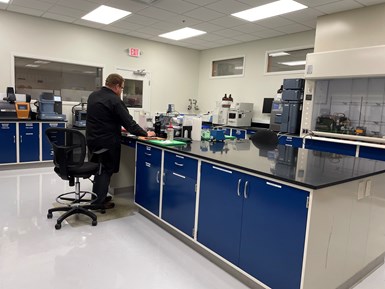
Quality assurance. Renegade maintains a strong focus on testing and research, evidenced by its two dedicated, certified testing labs for in-house R&D and customer QA. The analytical lab (top image) provides chemical testing capabilities for resins and prepregs, and the mechanical testing lab (bottom image) enables compression and strength tests for finished test panels.
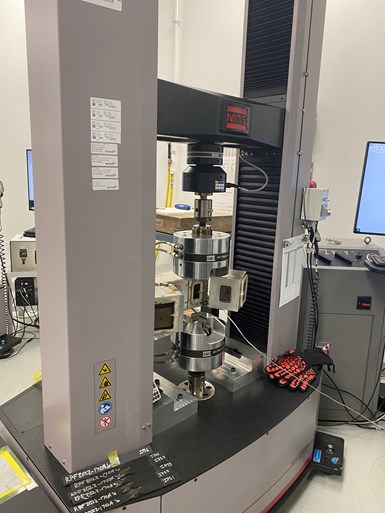
Magato explains that the two facilities are mostly independent, each containing their own materials storage, freezers, layup areas and prepreg lines — however, the exception is that the new facility houses the analytical lab, and the old facility holds the mechanical testing equipment.
Like the new renovated facility, the original Renegade building contains a proprietary resin compounding room, a prepreg line that was not able to be viewed during the time of the visit and an autoclave for processing.
The Nadcap-accredited mechanical testing lab, like the analytical lab, contains equipment that is used for customer quality assurance and in-house R&D. Test frames can be configured for a variety of aerospace standard test methods, for batch acceptance or development purposes.
Between both of the facilities, a heavy focus on R&D efforts and expanding capacity to meet the needs of current and future aerospace customers is evident. Matt Trombly, president of Renegade Materials, says, “Renegade’s reputation was built on high-temp materials, and that competency is unchanged, but our capabilities extend to other key thermoset resin systems used in aerospace applications.”
On the research level, Sutter says that Renegade Materials’ R&D group is constantly working to formulate new resins and chemistries to match customer needs, as well as processing technology to help support Renegades’ customers. “We take pride in being able to help our customers make their own finished components,” Magato adds.
Related Content
US Air Force selects Integris Composites ballistic body armor
Cratus Wave armor is thin, lightweight and reduces heat stress, providing buoyant personal protection for the 582nd Helicopter Group.
Read MoreLarge-format 3D printing enables toolless, rapid production for AUVs
Dive Technologies started by 3D printing prototypes of its composite autonomous underwater vehicles, but AM became the solution for customizable, toolless production.
Read MoreOrbital Composites wins AFWERX award for Starfighter drone fleet
Under the TACFI contract, Orbital is implementing the AMCM process to build 3D printed composite multi-mission UAS aircraft, surpassing $10 million in government awards.
Read MoreMATECH C/ZrOC composite is deployed in hypersonic aeroshells
Ultra high-temperature insulating CMC targets hypersonics, space heat shields and other demanding applications, tested up to 2760°C under extreme stagnation pressures.
Read MoreRead Next
Teijin completes acquisition of Renegade
Teijin says Renegade’s heat-resistant prepreg technologies will bolster its aerospace business.
Read More“Structured air” TPS safeguards composite structures
Powered by an 85% air/15% pure polyimide aerogel, Blueshift’s novel material system protects structures during transient thermal events from -200°C to beyond 2400°C for rockets, battery boxes and more.
Read MorePlant tour: Daher Shap’in TechCenter and composites production plant, Saint-Aignan-de-Grandlieu, France
Co-located R&D and production advance OOA thermosets, thermoplastics, welding, recycling and digital technologies for faster processing and certification of lighter, more sustainable composites.
Read More

.jpg;width=70;height=70;mode=crop)
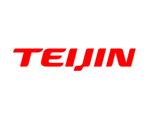











.jpg;maxWidth=300;quality=90)
